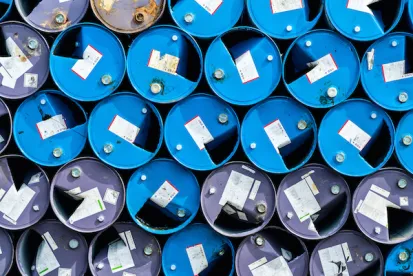On April 20, 2023, the U.S. Department of Commerce’s Bureau of Industry and Security (BIS) published in the Federal Register (88 Fed. Reg 24341) a Proposed Rule to implement export controls on certain instruments for the automated synthesis of peptides, which have been identified by BIS as a Section 1758 emerging and foundational technology. Comments on this proposed rule may be submitted to BIS no later than May 22, 2023.
Section 1758 Technologies
Section 1758 of the Export Control Reform Act of 2018 authorizes BIS to establish “appropriate controls on the export, reexport or transfer (in-country) of emerging and foundational technologies essential to national security.” BIS characterizes these technologies as “Section 1758 technologies.” In identifying such technologies, BIS considers “(i) the development of these technologies in foreign countries; (ii) the effect export controls imposed pursuant to this section may have on the development of such technologies in the United States; and (iii) the effectiveness of export controls imposed pursuant to this section on limiting the proliferation of the emerging and foundational technologies in foreign countries.”
On September 13, 2022, BIS issued an Advanced Notice of Proposed Rulemaking (ANPR) identifying automated peptide synthesizers as Section 1758 Technologies. More information on this ANPR can be found in our previous blog post here.
BIS received five comments in response to this ANPR:
-
One commentor stated that “synthesis of toxins using automated peptide synthesis is not viable, with the minor exception of conotoxins,” which cannot be synthesized “at quantities necessary to cause a significant environmental or terrorist threat.” BIS recognized that current production is limited to shorter peptide toxins, but “believes that the current instrumentation can produce enough peptide toxin to cause mortality and morbidity.”
-
Commenters stated that automation simply speeds up the manual process of producing controlled toxins and expressed concerns that “export controls for the reagents and consumables could control access to peptide synthesis” although major manufactures of these items are outside the United States. BIS replied that it will continue to “investigate potential export controls on the consumables for peptide synesis.”
-
Another commentator expressed that new technological developments for peptide synthesizers is “primarily useful for research for screening many different peptides for drug candidates.” BIS acknowledged the potential therapeutic development but noted that “these features can also be useful for other, more dangerous purposes.”
-
A common comment was that BIS “should not unilaterally control these technologies,” stating that these controls would have a “dramatic impact” on U.S. technological leadership in this field. One commenter suggested that BIS should allow “free use by academia to benefit overall development of biomolecular research.” BIS expressed that it would work with international partners, but that it does have authority to take unilateral action.
-
Lastly, one commenter explained that the “majority of large-scale production of peptides occurs manually.” BIS responded that this may be “worth looking at for further possible regulatory responses.”
Proposed Rule
BIS proposed changes to ECCN 2B352 (equipment capable of use in handling biological materials). This Proposed Rule will create a “new item paragraph k, which will contain three subparagraphs.” Paragraph K will control peptide synthesizers that are:
-
K.1: partly or entirely automated;
-
K.2: capable of generating continuous peptide sequences greater than 75 amino acids; or
-
K.3: capable of producing 100 mg of peptide at 75% or greater purity in a single run.
These items “would retain reasons for control that apply to the entire ECCN, which are proliferation of chemical and biological weapons (CB) column 2 and antiterrorism (AT) column 1.”
As these instruments and related technology are “used in research and development activities in the biotechnology field (e.g., U.S. university, military, and industrial laboratories),” BIS anticipates that these controls will result in “deemed export license applications . . to allow access to this ‘technology’ by foreign students and faculty at U.S. universities [and] . . . non-U.S. employees of U.S. biochemical firms . . . [as well as] third-country foreign nationals located in foreign countries who are engaged in research and development activities involving this ‘technology.’”



 />i
/>i
